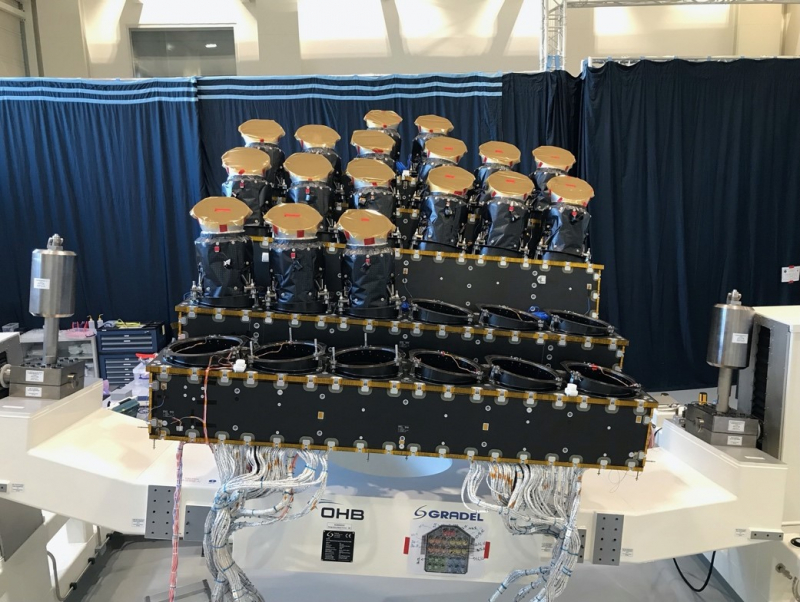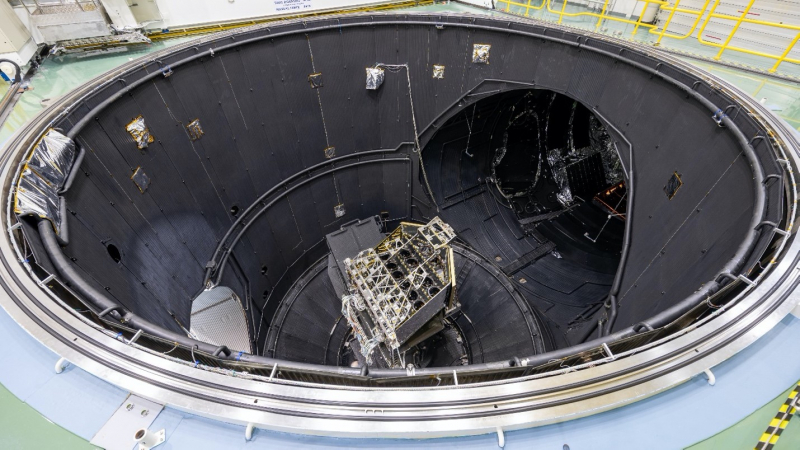Green light for the latest developments of the PLATO mission
ESA’s PLATO mission has been given the green light to continue its development after a successful critical review on January 11, 2022.
PLATO, or PLAnetary Transits and Oscillations of stars, is the third medium-class mission of ESA’s Cosmic Vision program. Its objective is to find and study a large number of planetary systems, with a focus on the properties of Earth-like planets in the habitable zone around solar-type stars. PLATO has also been designed to study seismic activity in stars, which will allow precise measurement of the parameters of the planets’ host stars, including their age.
The review verified the maturity of the entire satellite (the service module and the payload module), confirming the robustness of the satellite-payload interfaces and the payload development schedule. Particular emphasis was placed on the mass production of 26 cameras, and the robustness of the development schedule for both modules. PLATO will use the 26 cameras to discover and characterize exoplanets orbiting stars similar to our Sun.

This critical milestone was established specifically for PLATO at the time of mission adoption because of the development risks associated with mass production of the cameras.
After the work of review groups consisting of about 100 ESA experts, the January 11, 2022 review steering committee successfully ruled on the design, production, and assembly of the cameras. This step has been validated through structural, engineering and qualification model tests of the camera subsystems, performed in several European facilities. The thermo-elastic properties of the optical bench, which will house the 26 cameras, were verified using a new test technique developed by the satellite’s prime contractor, OHB System AG (Germany).
With this validation, the second phase of the industrial contract led by OHB System AG as prime contractor with Thales Alenia Space (France) and RUAG Space System (Switzerland) can now start.
The supply of the PLATO payload is the responsibility of ESA (European Space Agency) in collaboration with a European consortium of institutes and industry.
The next major milestone for PLATO is the critical design review of the entire satellite in 2023, prior to assembly.

After its launch, currently scheduled for late 2026, PLATO will travel to the second Lagrange point, 1.5 million km beyond the Earth in the opposite direction to the Sun. There it will join the Gaia satellites already there, James Webb on its way and Euclid scheduled for launch in 2023. At the Lagrange point L2, PLATO will observe more than 200,000 stars during its nominal four-year operation, looking for regular decreases in their light, decreases caused by the transit of a planet in front of the star’s disk. The analysis of these transits and of the variations of stellar light will allow to determine with precision the properties of the exoplanets and their host stars.
Through 8 CNRS-INSU laboratories and 1 CEA/CNRS laboratory (IAP, IAS, IPAG, IRAP, LAM, LESIA, OCA/Lagrange, LUPM and IRFU/AIM), France, with the support of CNES, contributes to various aspects of the mission, including:
- the calibration and thermal testing of the cameras,
- the on-board software,
- the electronics of he fast cameras,
- scientific software for the analysis of stellar and planetary signals.
In total, more than a hundred researchers and engineers in French laboratories and at CNES are following the development of the mission and preparing its scientific exploitation.
IRAP Contact
- Jérôme Ballot, jerome.ballot@irap.omp.eu






